Bringing Nature Home
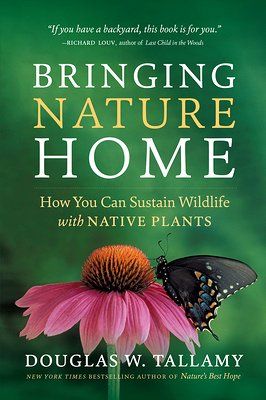 Bringing Nature Home
Bringing Nature Home
I’m going to apologize in advance because I’m going to point out something that’s been missing from your life for a while. It’s been disappearing so slowly and over such a long time that you probably haven’t noticed. The minute I point this out, you won’t be able to unsee it.
There are far, far fewer bugs around now than compared to your childhood.
Let that sink in. If you’re like me, you have at least one memory of riding in the car as a child, with the headlights on as you drive down a darkened road in the woods or through fields. The headlights are shining on the thousands of bugs ahead of you, and it’s inevitable that some will hit the window. By the time you get to your destination, the windscreen will be smeared with the remnants of dozens of the doomed creatures. It used to fascinate me to watch the air pillow around the car swoop some of the bugs up and over in an arc that made it seem like we were driving through a star field.
That doesn’t happen anymore. I’m behind the wheel of the car, the headlights are on, and I see some bugs… but no more star fields, no more stopping to clean the windshield on a long trip, maybe two or three bugs meet the windshield on a 4-hour journey, even through the boggiest part of my state.
I’d bet the same is true for you, especially if you’re in the United States. I have it on good authority that some in England have seen the same. It may not be a worldwide phenomenon, but it’s certainly happening.
The saddest part of this for me? I didn’t notice it either, until it was pointed out to me in a book. That book, Bringing Nature Home by Douglas Tallamy, made me look up from reading it and stare out the window and try to remember the last time I had seen the night swarm with tiny wings.1
Bringing Nature Home was a fascinating read from cover to cover. In the book, Tallamy puts forth a simple argument: we are killing off the bugs and thus the entire food chain by relying on non-native plants to adorn our yards. In order to save the bugs, the birds, the trees, we need to bring native plants back to our yards and gardens, and we need to do it now.
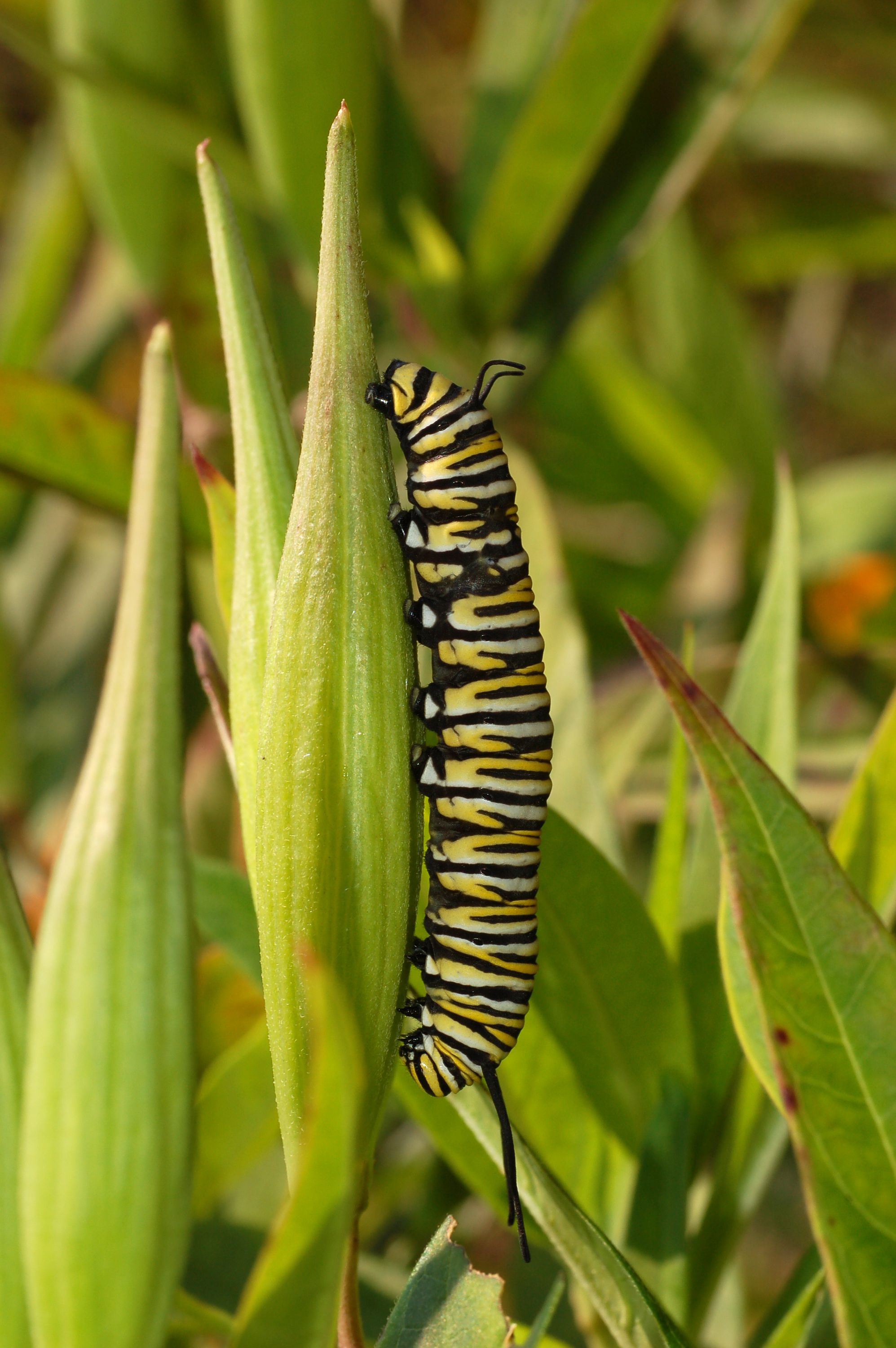 Monarch Caterpillar
Monarch Caterpillar
The chain of logic is a relatively simple one: there are bugs out in the world that survive by eating plants, or other bugs that eat plants, such as the ever-fascinating monarch butterfly. The caterpillars can only be born on milkweed plants and can only eat milkweed. No milkweed? No monarch butterflies.
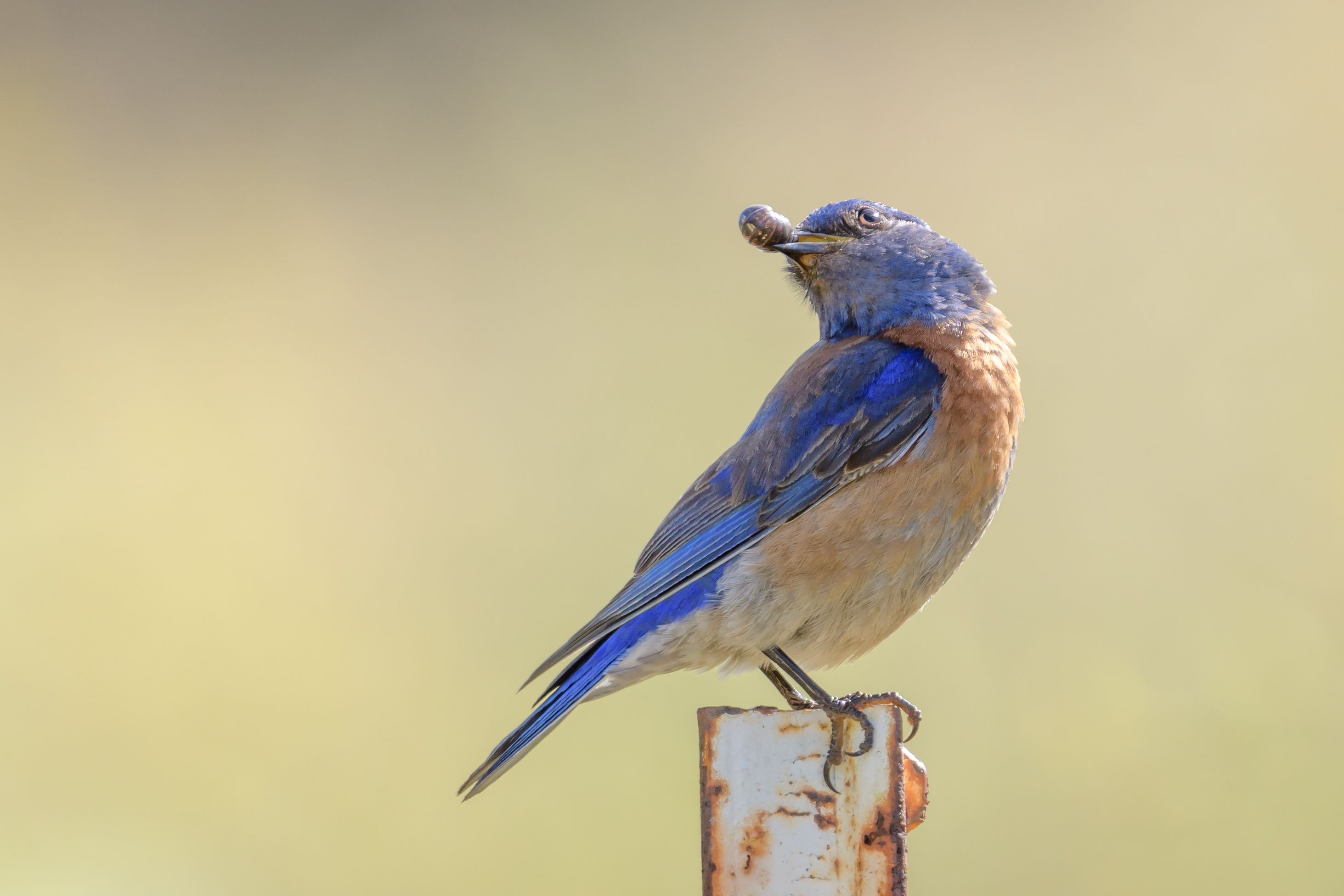 Western bluebird enjoying a pillbug
Western bluebird enjoying a pillbug
Becky Matsubara from El Sobrante, California, CC BY 2.0, via Wikimedia Commons
It’s not all about the butterflies of course. Tallamy argues that even the less charismatic bugs are necessary because they are a food source for birds, especially for baby birds. We may fill our bird feeders with seed, but bird parents only feed their babies wriggling insects with a bunch of protein. No insects of choice? No baby birds will survive long enough to make it to the feeder.
So how can we help? Well, first, get rid of the invasive plants in our area of influence. Kudzu is the plant every United States southerner knows; a noxious vine brought over here to help with erosion, it spreads and spreads and spreads, covering ground and shrub and tree until all is kudzu and there’s nothing left. Sure, invasive kudzu bugs like the leaves… but nothing else does. Another example is Japanese honeysuckle–it has taken over forests in the northern US–that smells nice and may provide nectar for bees, but it doesn’t host any of our native insects, and can decimate young saplings with it’s growth rate. The examples go on.
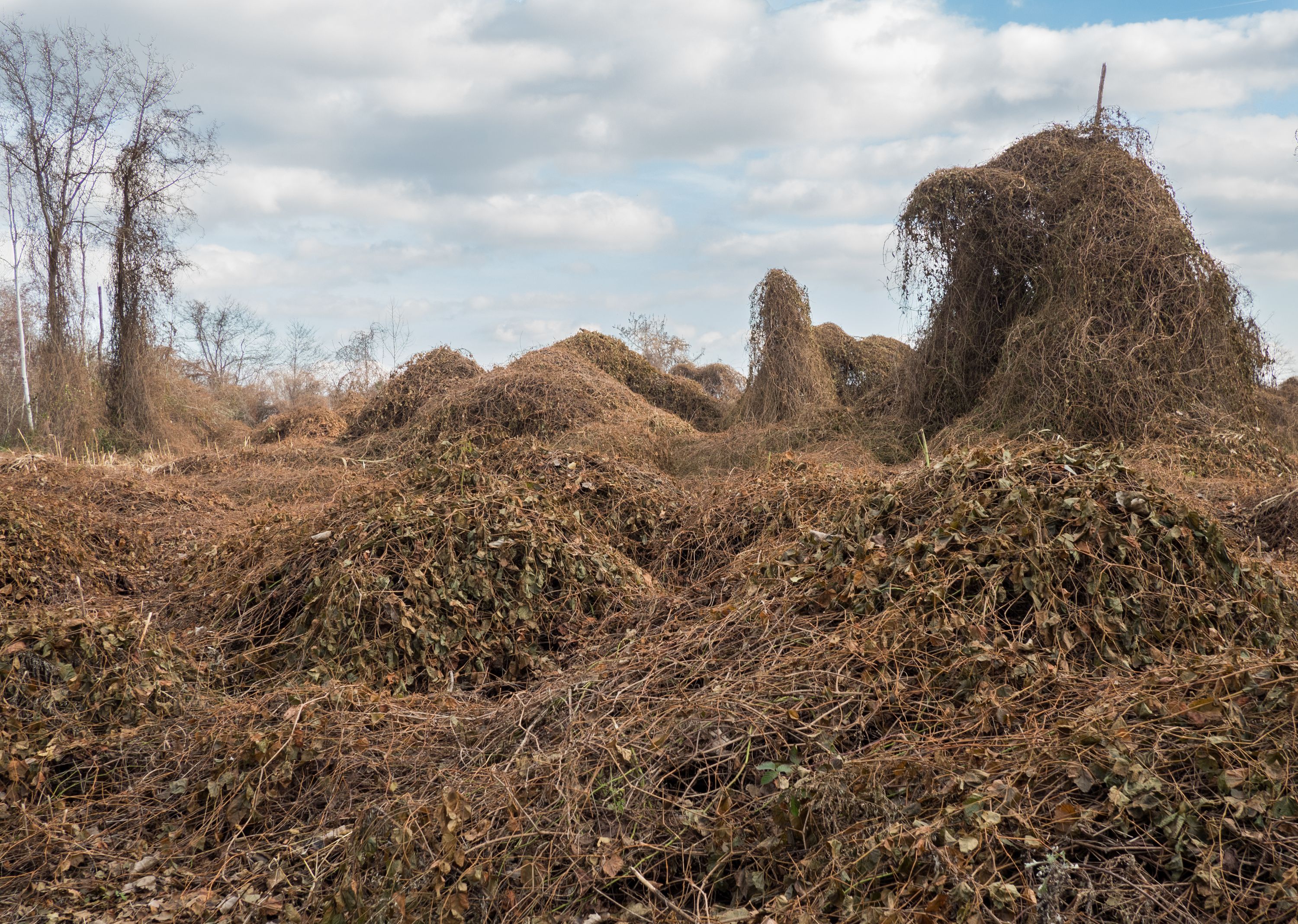 Dormant Kudzu
Dormant Kudzu
Rhododendrites, CC BY-SA 4.0, via Wikimedia Commons
 River Birch bark
River Birch bark
Photo by David J. Stang, CC BY-SA 4.0, via Wikimedia Commons
 Redbud in early spring
Redbud in early spring
Msact, CC BY-SA 4.0, via Wikimedia Commons
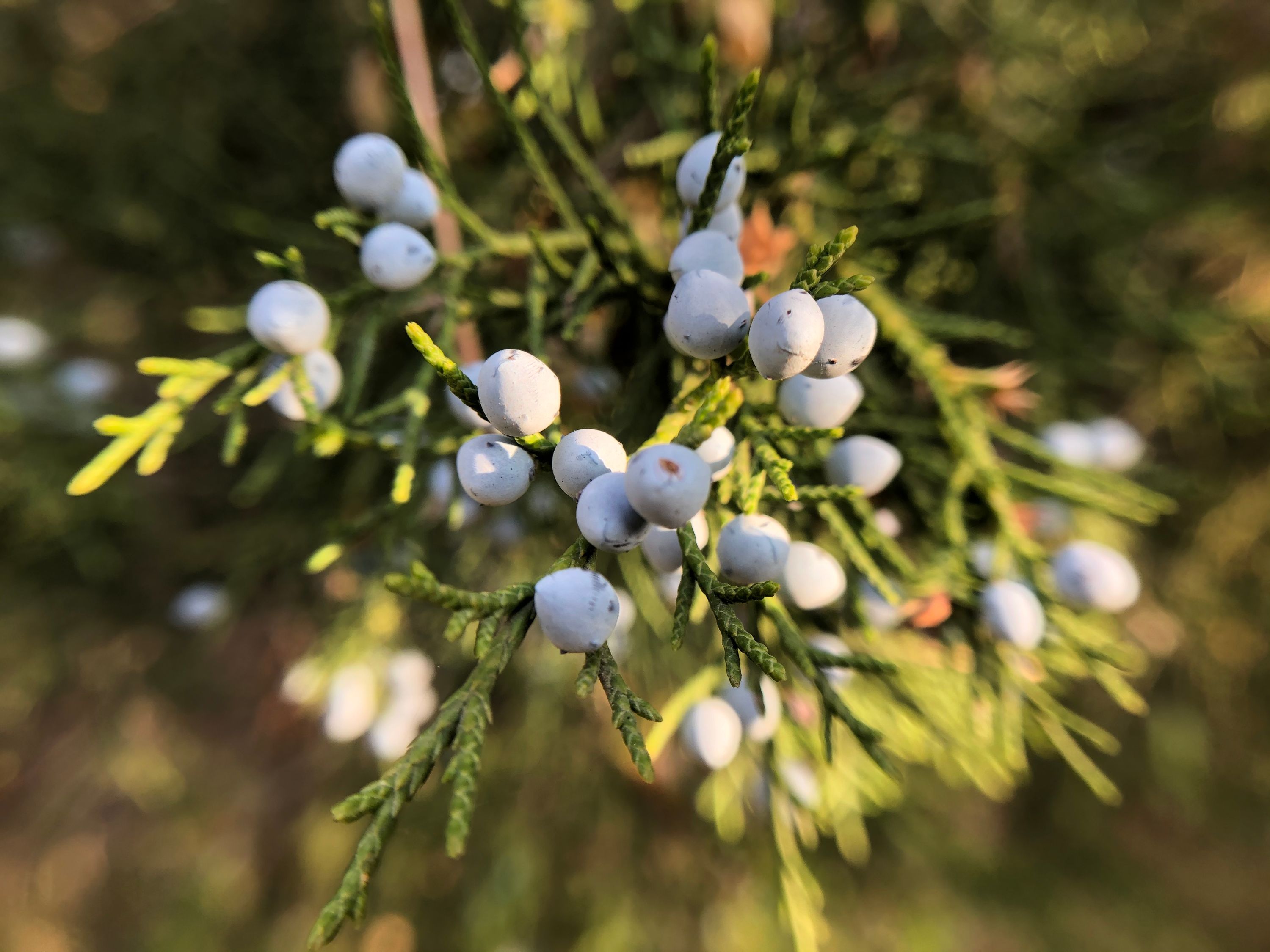 Juniperus virginiana, Easter Redcedar
Juniperus virginiana, Easter Redcedar
GeoO, CC BY-SA 4.0, via Wikimedia Commons
 Garden Phlox
Garden Phlox
Atilin, Public domain, via Wikimedia Commons
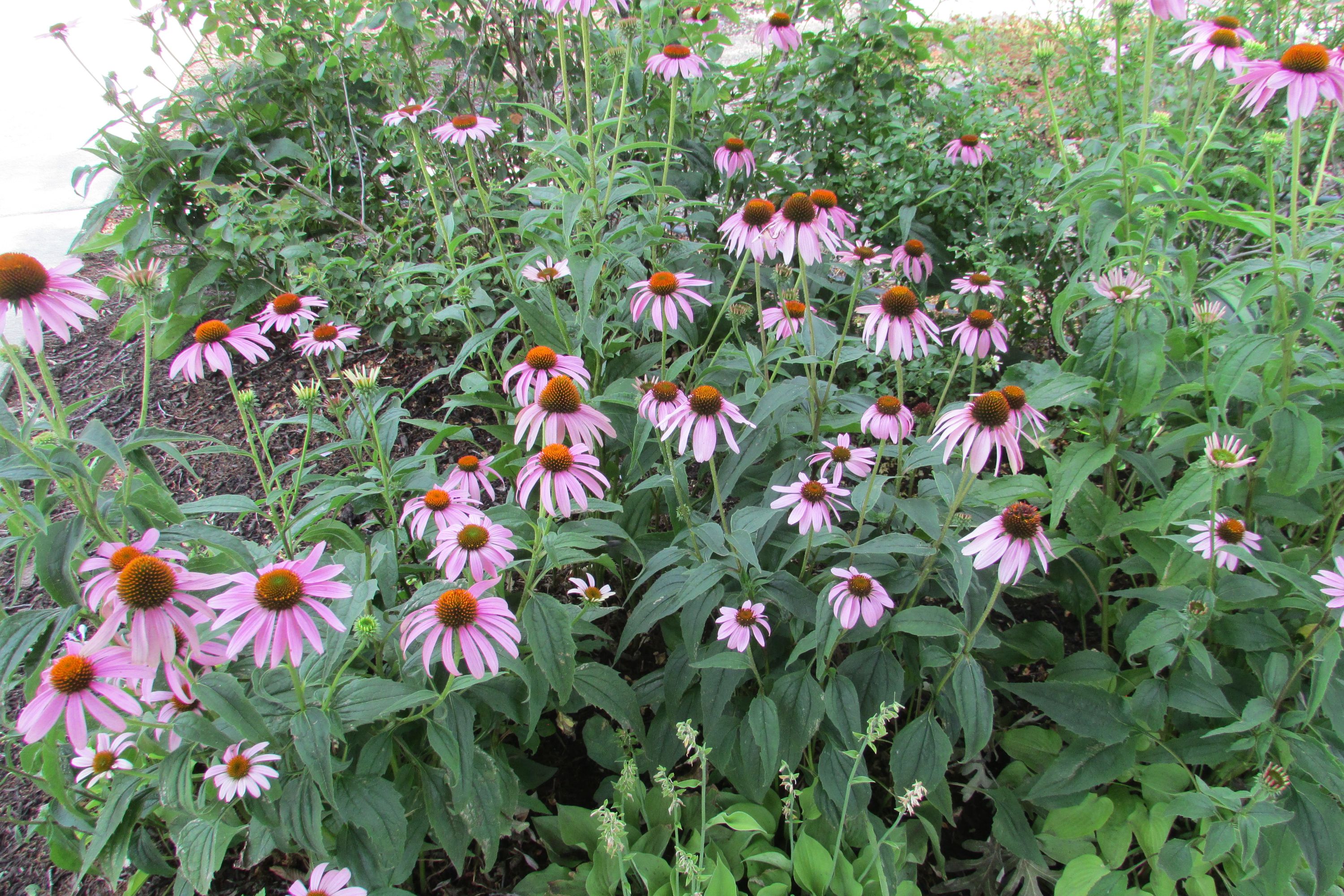 Drifts of purple coneflowers
Drifts of purple coneflowers
Chris Light, CC BY-SA 4.0, via Wikimedia Commons
 A magnolia in full bloom
A magnolia in full bloom
M2545, CC BY-SA 4.0, via Wikimedia Commons
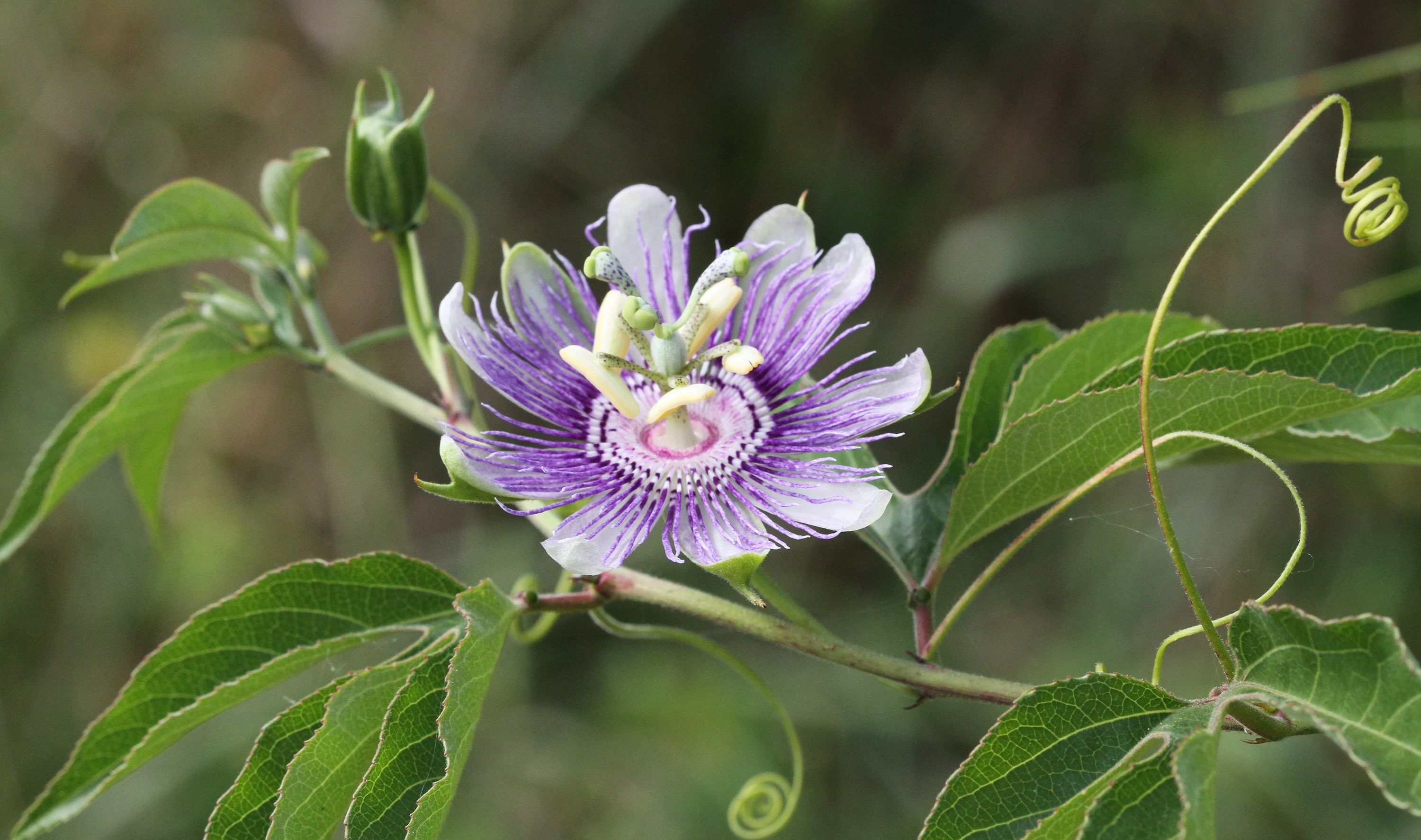 Passionflower vine
Passionflower vine
John Flannery from Richmond County, North Carolina, USA, CC BY-SA 2.0, via Wikimedia Commons
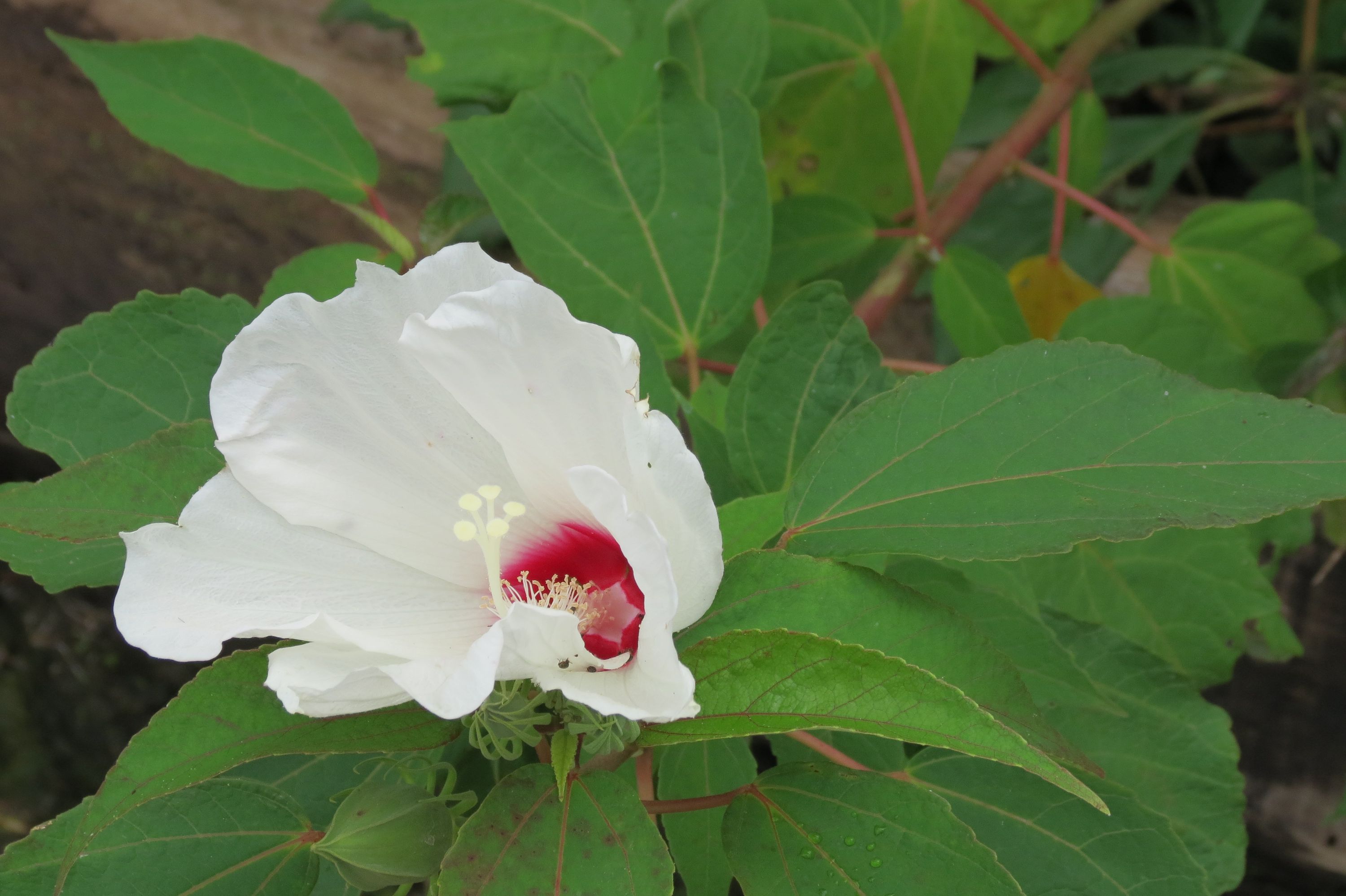 Swamp Rose-Mallow
Swamp Rose-Mallow
vastateparksstaff, CC BY 2.0, via Wikimedia Commons
Second, replace the non-native plantings in our gardens with natives. One example that is brought up is non-native azaleas. Commonly planted along the foundations of houses, they have showy flowers and are evergreen, whereas native azaleas are just as showy (my favorite being the pinxterbloom variety) but are less susceptible to the common diseases and host a number of species that use their leaves or their pollen for food! The reason non-native plants are in our gardens are for things like “pest-resistance”, aka deer don’t like to eat them, and neither do bugs. Why? Because they aren’t in the natural diet of either. And while that seems good at first glance, over time, this leads to fewer bugs and fewer deer.
Third, add more plants to your yard, and add them in wild variety and abundance. If you’ve got a front garden, how much of it is covered in mulch? How many times do you need to pull weeds in a week to keep it looking pristine? Probably too much and too many. This fall, why don’t you spread native seeds by the handful and see what pops up? Plant coneflowers in drifts–they’ll attract pollinators of all kinds, as well as birds who forage for seeds. In the fall, other insects will make homes in the stems and feed the birds after the winter cold has passed! If you’re lucky, a cute little garden snake might hide under the leaves and catch prey in a yard where it might never have wandered. Plant a tree in your backyard! There are so many varieties that are native to your location, I beg you pick one of them. Maybe a magnolia for their gorgeous leaves and gigantic flowers? Or an oak tree that will shade your house for decades if tended properly? Maybe a river birch if you live close to a water source. The possibilities are endless. If you can, plant multiple trees! Plant them as specimen trees–on their own, standing tall–or in clusters so they grow like a family and create a shady space beneath their boughs. Watch the birds come home and build a nest between their branches.
If you are in the United States, Bringing Nature Home has lists of trees and plants you can bring into your backyard to help the bugs, to help the birds, to help ourselves.
For my part, I have plans to turn the top third of our backyard into a native plant forest, with a magnolia, a redbud, a few black cherry trees, and some maples. There are three volunteer junipers growing along the side of our yard already that I’m going to tend through their infancy, along with some passionflower and muscadine vines. The raspberries in our garden will soon be downwind from the native raspberries and blackberries that have popped up now that we stopped mowing near the junipers.
Along the side of our house, we have one full-shade area and one full-sun area. I’m thinking a boggy garden on the side that never fully dries, bringing in golden canna and elderberry. As for the side that gets the full brunt of the sun, maybe some taller shrubs trees to help shade the house a bit more and help keep the house cool. Or maybe I go with some prairie plants like asters and goldenrod?
Our front garden has been slowly turning into a native plant haven already. There are a few non-natives, like the crepe myrtle that sprung up one year as a bush and we helped grow into a tree, or the lungwort and rosemary just off the path. But adding in phlox–both creeping and garden varieties–a swamp mallow, some blueberry bushes and native grasses has already made mulching less of a concern and added riots of color.
Many of your local garden centers will have non-native or even invasive plants on display all year round because those are the plants that sell. But you cannot tell me a black willow is not just as gorgeous as the non-native weeping willow, or that a Bradford pear–that smells like death and cross pollinates to create horrible thorn monsters–would be better in any yard than a native cherry tree.
Bringing Nature Home was an eyeopening read, and it really made me excited to get my hands in the dirt and bring the bugs back. I’ve already seen the results: we have lightning bugs this year, a lack of which I never noticed until I saw the first flash of one just a few weeks ago. It made me want to sit out under the stars and watch them burn.
Links marked with an asterisk(*) are affiliate links through Bookshop.org, an online bookseller that supports your local bookstores!↩︎
20 June 2022 books native-plants plants
